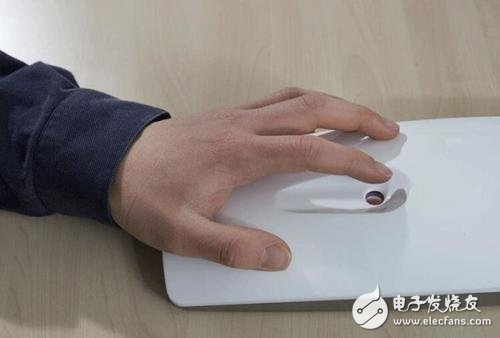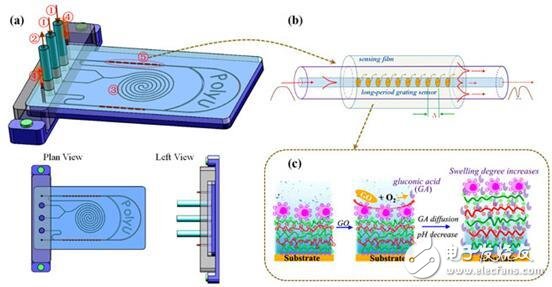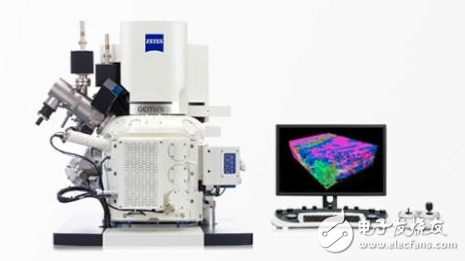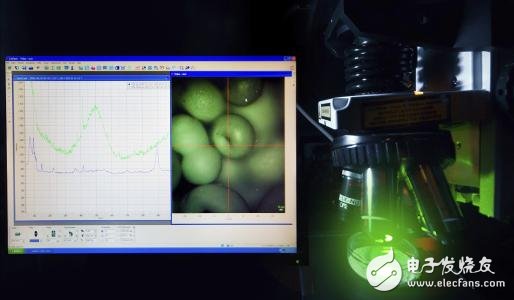Non-invasive measurement usually refers to non-invasive measurement. In contrast to invasive measurement, indirect measurement is also indirectly guided or sensed by indirectly guiding or sensing the physiological and biochemical parameters of the living body by contacting the measuring instrument with the skin of the measured object. Some methods of minimally invasive measurement are also known as non-invasive measurements. Non-invasive medical sensors are sensors that are applied to the biomedical field using non-invasive measurements.
Development of non-invasive medical sensors
With the continuous improvement of people's health awareness and the diversification of modern medical methods, non-invasive detection has become another popular direction of sensor development in recent years. Non-invasive detection by changing sensitive components or detection principles has become a key area of ​​modern clinical diagnostic research. The finger-clip non-invasive blood flow parameter detector produced by Compson is fixed on the fingertip of the human body by finger-clamp photoelectric volume blood flow pulse wave sensor, which can quantitatively detect the heart beat volume, peripheral resistance, blood vessel elasticity and blood. More than a dozen blood flow index parameters in terms of viscosity and microcirculation status, showing the actual measured value and trend of each parameter, for comparison with the normal range.
In addition, non-invasive blood glucose testing has caused great concern. The use of glucose sensitive to specific wavelengths of infrared light can achieve non-invasive blood glucose detection, thus overcoming the shortcomings of blood collection detection. At present, many scientific research institutions in the world are conducting preliminary research and development work on non-invasive blood glucose measurement, such as: OHIO University, LOWA University, MARYLAND University, FUTREX Company, BIO
In addition, non-invasive blood glucose testing has caused great concern. The use of glucose sensitive to specific wavelengths of infrared light can achieve non-invasive blood glucose detection, thus overcoming the shortcomings of blood collection detection. At present, many scientific research institutions in the world are conducting preliminary research and development work on non-invasive blood glucose measurement, such as: OHIO University, LOWA University, MARYLAND University, FUTREX Company, BIO
The principle of measurement of non-invasive medical sensors
Non-invasive measurements usually do not cause trauma to the organism, but measurement results are often not as accurate as invasive measurements. Invasive measurement can also be used as a comparative evaluation standard for non-invasive measurement (usually using indirect measurement) with low precision due to its clear principle, reliable method and high measurement accuracy.
Non-invasive measurement is commonly used with blood pressure measurement, body fat content measurement, etc. There are also some non-invasive blood glucose detection methods developed and utilized:
1. Method for measuring the concentration of blood glucose in subcutaneous exudate tissue fluid
In this method, glucose levels are detected by subcutaneous exudation of tissue fluid. For example, a glucose watch. It is a non-invasive blood glucose measurement tool. In actual use, the glucose watch measures not the glucose content in the blood, but the glucose level in the tissue fluid. The theoretical basis is that the blood sugar level and the amount of sugar in the tissue fluid are basically It is equivalent. This table is slightly larger in appearance than the average watch. There is a permeate sensor module on the back of the watch to contact the skin. This module contains a weak current and uses microdialysis technology to utilize the subcutaneous tissue fluid that penetrates the skin. The sugar content of the tissue fluid was measured.
2, microwave non-invasive blood glucose detection method

The basic principle of this measurement method is to first emit a microwave of a certain frequency, and in the solution containing glucose according to the characteristics of the microwave, if the ions in the solution, especially the sodium ions, are encountered, the propagation path of the microwave is affected. These ions can cause some interference to the microwave, such as weakening its amplitude and phase shifting the spectrum of the microwave. This effect varies differently depending on the concentration of each glucose solution. Therefore, several microwaves of appropriate frequency are selected to pass through the human tissue from different orientations, and then the glucose concentration in the blood of the human body can be analyzed according to the detected frequency and phase of the microwave and the amplitude change to achieve the purpose of measuring the blood sugar level. The microwave detection method can detect the blood sugar and non-invasively measure the content of other substances, such as cholesterol and glycoprotein. Although the microwave detection method is very fast, when the microwave passes through the human tissue, the loss is also relatively large, and this situation also brings certain difficulties to the application of the microwave detection method.
3. Noninvasive blood glucose measurement by subcutaneous implanted sensor method
The principle of this method for non-invasive blood glucose testing is to use a polymer sensor with a surface that can respond to acidity changes in a timely manner to detect glucose oxidase levels. The specific situation is that when glucose oxidase encounters blood sugar, a series of chemical reactions will occur. This chemical reaction will produce an acidic substance, which will cause the glucose polymer to expand greatly and thus change the frequency of the sensor. . The reader corresponding to the sensor then displays these frequency changes as a number to indicate changes in the patient's blood glucose level. According to relevant research, Pennsylvania State University has developed a wireless miniature sensor. Diabetes patients only need to implant this sensor under the epidermal tissue, and then monitor their blood glucose levels according to the electronic readings of the sensor. Send real-time monitoring reports to your attending physician.
4, the human body's RF impedance non-invasive measurement of blood glucose levels
According to the theory of RF impedance, when an electromagnetic wave having a wavelength longer than that of infrared rays is applied to the human body, since glucose is a non-ion-soluble substance, it absorbs electromagnetic waves of a certain frequency and extracts characteristic values ​​of electromagnetic waves of the absorbed frequency. Quantitative analysis is theoretically possible to derive the glucose content of the blood. Although in theory this measurement method is mature and feasible, in practice, because body fluids also contain other kinds of non-ionic soluble substances, they also absorb electromagnetic waves, so how to separate and extract the glucose absorption characteristic values ​​corresponding to the frequency The determined spectral line analysis is the key to the practical operation of this method. However, the project is currently only in the laboratory research phase, and the relevant data does not indicate when it can progress to the clinical trial phase.
5. Using the principle of conservation of energy
The measurement of non-invasive blood glucose is the process of energy metabolism in the human body. Glucose is the main energy supply substance of the human body. In the case of sufficient oxygen supply, glucose oxidation occurs in the body. In this chemical equation, as the main Changes in the concentration of glucose in energy substances can cause changes in the metabolism of the human body, which affects changes in physiological parameters such as body temperature. Therefore, Ok Kyung Cho et al. made the following assumptions:
1 human body heat production = body heat dissipation;
2 The human body is at rest, and the external work is equal to 0;
3 The heat generated by the human body can be described by physiological parameters such as blood glucose concentration and oxygen capacity;
4 oxygen capacity depends on hemoglobin concentration, blood oxygen saturation and blood flow of capillaries;
5 The main way of heat dissipation is heat conduction, heat convection and heat radiation.
According to the above five hypotheses, according to the principle of conservation of energy, the following conclusions can be drawn: the heat generated by metabolism is a function of blood sugar level and oxygen capacity, and the oxygen capacity is a function of arterial oxygen saturation and blood flow rate, and the pulse beat rate as a function The parameters are corrected, so the blood sugar level can be calculated by measuring the heat generated by metabolism, blood flow rate, blood oxygen saturation and pulse rate. Using this method to measure the blood sugar level of the human body, the first is to use the relevant theory to establish a mathematical model of convective heat transfer on the surface of the human body. According to the mathematical model of human body heat balance, the metabolic rate of the human body (such as the finger) is calculated, and then calculated according to the improved heat removal method. The blood flow velocity in the human body is finally established according to the conservation of energy to establish its overall mathematical expression.
6, using saliva for non-invasive blood glucose testing

This method uses saliva to detect glucose levels. Some clinical medical research data show that the blood glucose concentration is directly proportional to the amylase contained in the saliva, so by measuring the amount of salivary amylase in the human mouth, the blood glucose concentration of the test body can be indirectly known. The main technical difficulty of this blood glucose detection method is the development of high-sensitivity, high-specificity test paper, and the high sensitivity to the detection device.
7, ultrasonic blood glucose detector
The principle of the ultrasonic blood glucose detector is to use the ultrasonic emission instrument to emit a low-frequency ultrasound beam to the skin. Because of the penetration of the ultrasound beam into different substances in the human body, the content of glucose molecules in the blood can be known by the reflection of the ultrasonic echo. American researchers have recently developed an ultrasonic testing instrument that painlessly measures blood glucose levels in diabetic patients. The accuracy of this ultrasonic tester is almost similar to that of traditional blood sampling tests. Due to the painless test, the instrument is generally accepted by diabetic patients. This instrument quantifies the body's blood glucose levels using differential ultrasound values ​​in diabetic patients and can be measured every 15 minutes in 4 hours. Although the instrument is accurate and efficient, the stability of the results has not been recognized by the relevant medical department.
8, Optocal Tomography (OpTIcal coherence Tomography)

OCT technology was widely used in medical imaging and diagnosis after being proposed by Fujimoto et al in 1991. The principle of this technique is to use the accumulation of light to make a tomographic scan of the skin. The results after photography will show different glucose levels in different tissues, because the glucose contained in each tissue has different concentrating refractive indices. Calculate the blood sugar level of the test subject. Studies have shown that high-resolution concentrating tomography can detect millimeter-depth tissue to reduce the interference of the skin layer on the signal. A study of healthy subjects showed that changes in blood free glucose values ​​are highly correlated with OCT signals and are very sensitive to changes in blood glucose levels, but their stability to measured values ​​is also required in diabetic patients. Further research on the body.
9, non-invasive blood glucose measurement by optical rotation
Non-invasive measurement of blood glucose by optical rotation is based on the polarization characteristics of light, and the blood glucose concentration of the human body is obtained by measuring the deflection angle of transmitted light (or reflected light).
10. Photoacoustic spectroscopy and laser Raman spectroscopy
The principle of measuring the blood glucose photoacoustic spectroscopy method is a method of measuring the temperature change and reflecting the tissue composition of the human body by utilizing the mutual thermal interaction between the near-infrared laser pulse and the human tissue.
Firstly, the near-infrared laser pulse is injected into the human body. The internal structure of the human tissue will cause slight local heat change due to the different absorption of light by molecules of different kinds of components. When the temperature continues to rise and cause rapid thermal expansion, it is placed on the surface of the tissue. The temperature and pressure sensors can detect ultrasonic pressure waves, ie photoacoustic signals. The content of a specific component inside the tissue can be detected by using the difference in amplitude and frequency of the photoacoustic signals dispersed by different tissues. The method has the characteristics of high sensitivity, but it is sensitive to changes in the internal structure of the tissue, thus requiring a high sensitivity external sensor pair detector.

At present, photoacoustic spectroscopy is very active in in vitro research, but the research results are only published in a small amount. When the laser Raman spectroscopy acts on glucose, a Raman scattering effect occurs, that is, a weak stokes line and an antistokes line are generated. According to the theory of light quantum, when an incident photon collides with a molecule at the initial energy level, energy exchange occurs between the photon and the molecule according to the momentum theorem. The photon not only changes the direction of motion, but also transfers a part of the energy to the collided The molecule, or a portion of the energy from the molecule, is used to change its direction of motion. Since the difference between the frequency of the Raman scattered light and the Rayleigh scattered light (Raman shift) and the vibration frequency of the collided molecule are related to the energy level, the Raman shift is a physical quantity that characterizes the molecular vibration and rotational energy levels of the substance. Laser Raman spectroscopy is the use of this principle to measure the data of Raman spectroscopy to analyze the concentration of glucose in human blood.
However, this method has many limiting factors. Due to the absorption and scattering effects of biological tissues, common measurement methods are extremely difficult to detect Raman signals. In addition, the background fluorescence signal intensity of protein molecules generated under the laser effect is often comparable to that of Raman signals. Therefore, the Raman method generally uses the anterior chamber of the eye as the best measurement site, because the safety radiation dose of the eye is greatly limited, resulting in less incident light energy, and the detected Raman signal is weaker. Therefore, the current research shows that the application of Raman spectroscopy to the field of component detection in humans is still in its infancy.
11, infrared spectroscopy
Non-invasive blood glucose measurement Infrared light can be divided into several regions according to different wavelengths. The region with a wavelength of 780 nm to 2500 nm is called the near-infrared region, and the region with a wavelength of 2500 nm to 25000 nm is called the mid-infrared region. In the current non-invasive blood glucose measurement method, infrared spectroscopy is currently the most widely used non-invasive blood glucose measurement method, mainly through the human body analysis of near-infrared, mid-infrared or far-infrared, extracting blood glucose content from the spectrum.
Cummins Flexible Hose,Cummins Steel Braided Tube,Cummins Genuine Steel Braided Tube,Steel Braided Tube Replacement Parts
Chongqing LDJM Engine Parts Center , https://www.ckcummins.com